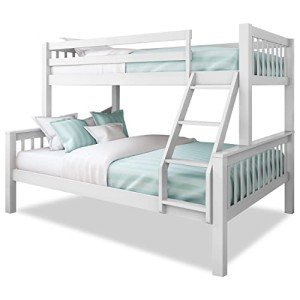
Understanding Slide Beds: A Comprehensive Overview
Intro
Slide beds represent a revolutionary development in the field of transportation and logistics, particularly in the context of the trucking industry. These specialized beds use improved filling and dumping capabilities, increased effectiveness, and much better safety standards. As the need for logistics services becomes more sophisticated, slide beds emerge as a vital tool for companies seeking to optimize their operations. This short article looks into the numerous aspects of slide beds, including their design, advantages, types, and upkeep considerations.
What is a Slide Bed?
A slide bed, frequently referred to as a moving truck bed or slide-out bed, is a kind of truck bed designed to extend and retract, permitting much easier access to freight. These beds can slide out either by hand or through automated systems, facilitating loading and discharging while lessening the strain on employees.
How Do Slide Beds Work?
The functionality of slide beds can vary based upon their design:
Manual Slide Beds: These beds require one or more people to pull or press the bed out. While simple and cost-effective, manual slide beds may not be suitable for durable applications.
Automated Slide Beds: These beds run through hydraulic or electrical systems that enable effortless extension and retraction at the push of a button. Automated systems frequently include safety features to avoid accidents throughout operation.
The fundamental operation of these systems can be summarized in the following table:
| Type | System | Usage | Pros | Cons |
|---|---|---|---|---|
| Handbook Slide Beds | Pull/push operation | Light to medium loads | Lower cost | Needs physical labor |
| Automated Slide Beds | Hydraulic/Electric | Heavy loads and regular usage | Convenience and performance | Greater preliminary financial investment |
Benefits of Using Slide Beds
Slide beds use several advantages that make them an appealing alternative for companies in numerous sectors. These advantages can be classified into operational efficiency, security, and cost-effectiveness:
Operational Efficiency
- Easy Access: Slide beds allow workers to reach cargo without having to climb up into the truck or maneuver around tight areas.
- Time-Saving: Quick filling and dumping mean lowered turn-around times for lorries, leading to increased efficiency.
- Better Space Utilization: The ability to extend the bed suggests that freight can be arranged more effectively, assisting in much better usage of area.
Safety
- Reduced Injury Risk: With easy access to cargo, the possibility of musculoskeletal injuries reduces substantially.
- Boosted Stability: Slide beds are designed to accommodate much heavier loads more equally, enhancing car stability.
Cost-Effectiveness
- Increased Payload Capacity: Slide beds permit for greater volume transport without making significant modifications to vehicles.
- Long-Term Durability: Investing in a quality slide bed can cause decreased upkeep expenses with time.
Types of Slide Beds
There are a number of kinds of slide beds readily available in the market, each dealing with various needs and applications. Here are the most typical types:
- Standard Slide Beds: These are the most prevalent and serve general purposes throughout numerous sectors.
- Sturdy Slide Beds: Designed for larger cars and heavier loads, these beds enhance structural stability.
- Custom-made Slide Beds: Customized options accommodate particular industry needs, such as animals transport or customized devices.
Slide Bed Types Comparison
| Type | Perfect Use | Optimum Load Capacity | Personalization Options |
|---|---|---|---|
| Standard Slide Beds | General transport | Approximately 3,000 lbs | Restricted |
| Sturdy Slide Beds | Industrial and construction | Over 3,000 lbs | Readily available |
| Custom-made Slide Beds | Specialized transportation requires | Varies by design | Highly adjustable |
Upkeep Considerations
Maintaining a slide bed is important to guarantee its longevity and ideal performance. Here are essential upkeep ideas:
- Regular Inspections: Routinely look for wear and tear, guaranteeing that all moving parts are working correctly.
- Lubrication: Keep moving elements well-lubricated to decrease friction and avoid rust.
- Cleanliness: Regularly tidy the slide bed to remove debris and pollutants that may hinder operations.
- Tighten up Fasteners: Periodically guarantee that all bolts and screws are tightened to prevent structural failure.
FAQs About Slide Beds
Q1: Are slide beds ideal for all types of trucks?A1: While slide beds can be adjusted for a range of truck models, it is vital to seek advice from an expert to ensure compatibility.
Q2: How much weight can a slide bed hold?A2: The weight capability of slide beds differs commonly; standard slide beds normally hold up to 3,000 pounds, while sturdy options can accommodate far more.
Q3: How often should slide beds be preserved?A3: Regular upkeep is necessary; inspections must be carried out at least every 6 months, with more frequent checks suggested for heavy-use automobiles.
Q4: Can I customize a slide Fun White Pine 3FT Bunk Bed with Slide (www.bunkbedsstore.uk) for my specific needs?A4: Yes, lots of manufacturers provide customization choices to cater to industry-specific requirements.
Conclusion
Slide beds are quickly ending up being among the most efficient services for improving logistics operations. With their capability to improve access to freight and help with quicker loading and discharging procedures, they exhibit a blending of innovation and utility that attends to the needs of contemporary transportation. By selecting the right type of slide bed and preserving it correctly, businesses can considerably improve their functional performance, safety, and cost-effectiveness. The future looks assuring for slide beds, as they continue to develop and meet the growing needs of the logistics industry.